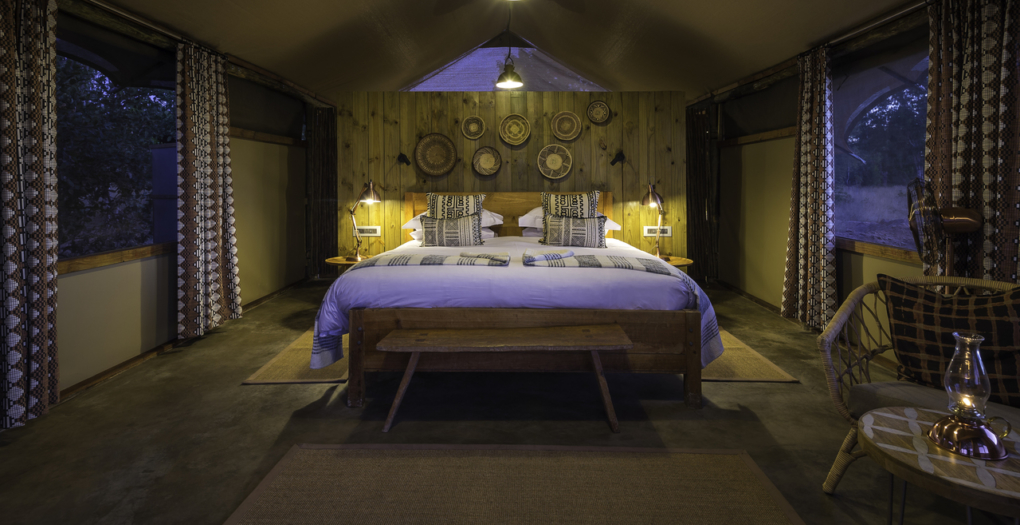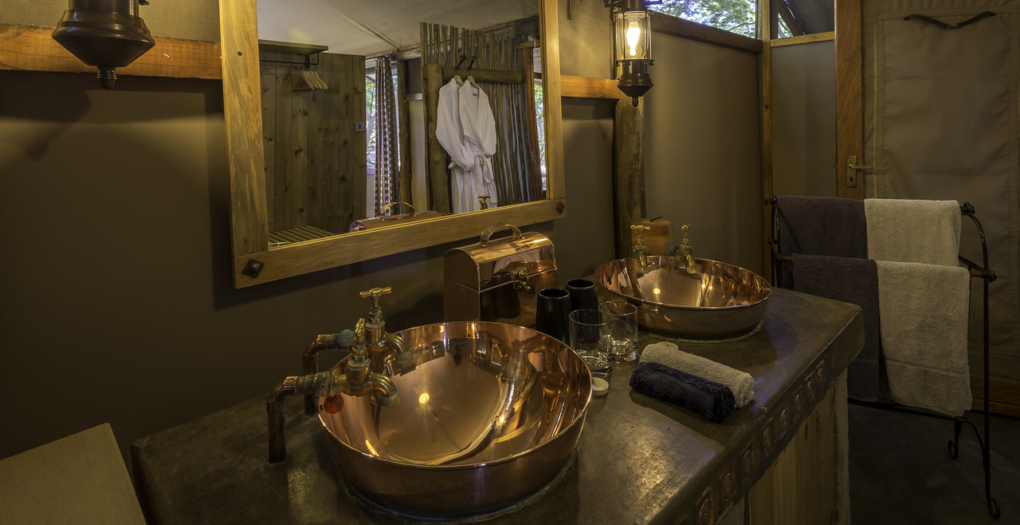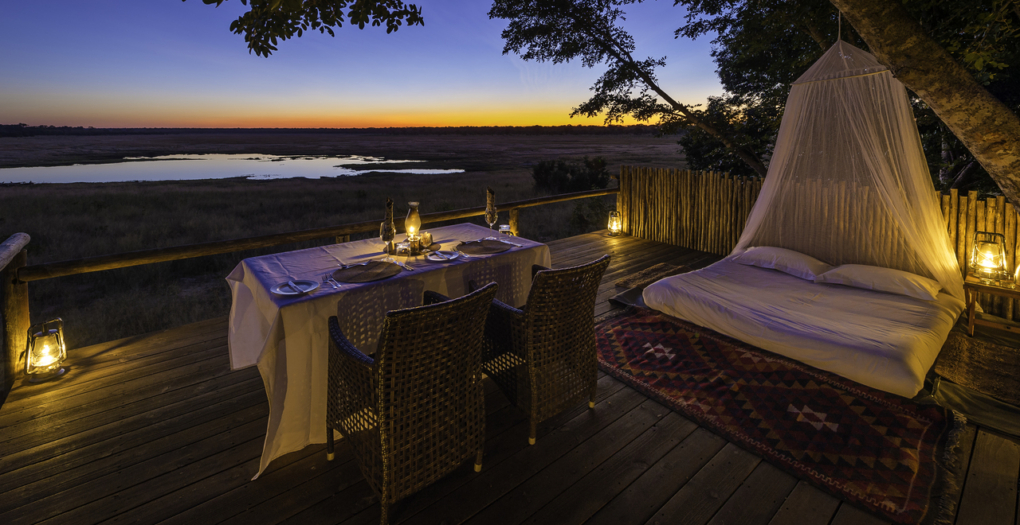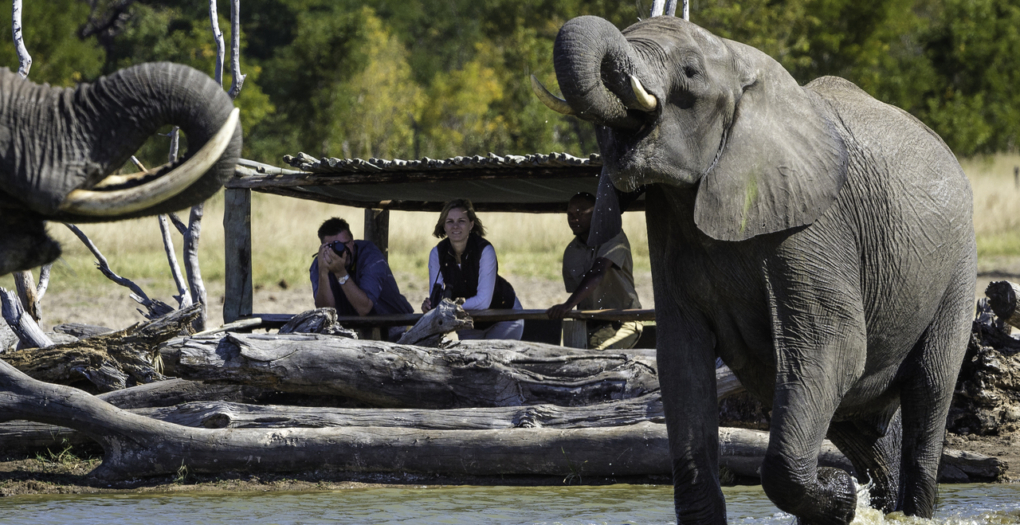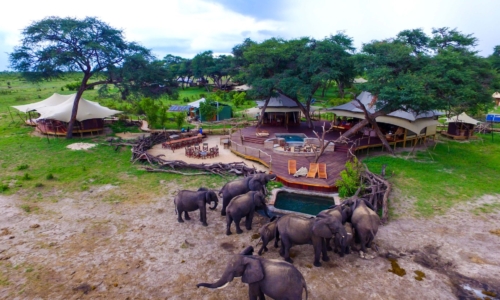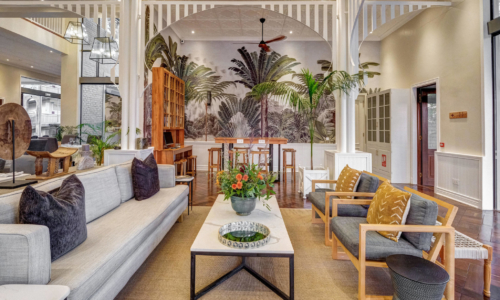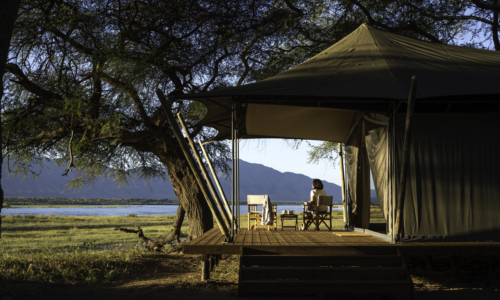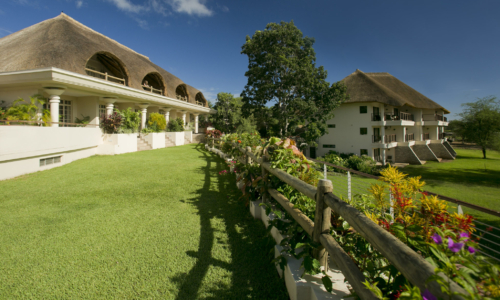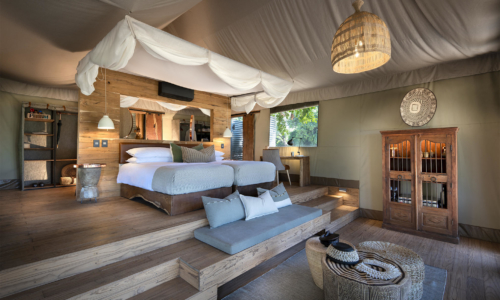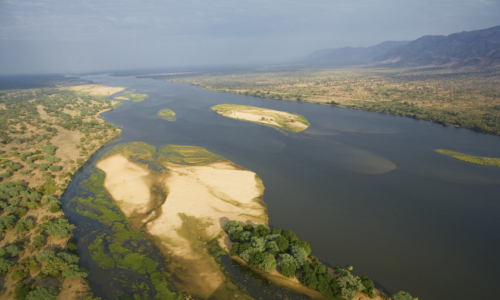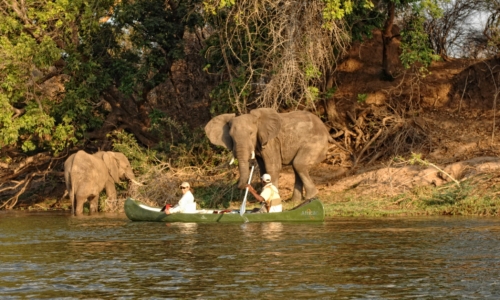Accommodations at the camp consist of six spacious tents. There are five standard tents which are made up of four twin-bedded tents and one double -bedded tent. Each tent has an en-suite bathroom with double vanities, a flush toilet, and both an indoor and outdoor shower. The camp has one family tent which is made up of two adjoining rooms with a shared bathroom. The tents enjoy a shaded veranda with a chair for relaxing in privacy and watching the wildlife.
The camp is located in the Hwange National Park, Zimbabwe’s largest and most popular national park. The vegetation across the park vary hugely, ranging from the semi desert scrub on the edge of the Kalahari in the south, to forests, granite hills, and valleys of mopane woodlands in the north. There is an abundance of wildlife found in the park year-round including lion, buffalo, cheetah leopard, spotted hyena, cheetah, giraffe, sable, roan, blue wildebeest, impala, waterbuck and reedbuck. Hwange is known for its large population of elephants. Two important conservation and research projects are operated within the Park: The National Leopard Project and the Painted Dog Project.
Game drives are conducted in open Land Rovers by expert guides and trackers through both the private concession and Hwange. Morning walking safaris led by a knowledgeable guide are the best way to see the landscape in detail and view any smaller flora or fauna missed by the vehicles. Night drives discover the nocturnal world of lesser bush baby, spotted hyena, leopard, lion, Selous mongoose, pangolin, caracal, porcupine, scrub hare, springhare, and even honey badger. A bird watcher’s paradise, there are over 400 bird species in the park. The camp also has a log-pile hide behind a busy waterhole. For a chance to sleep under the stars, the camp star bed is on a raised platform overlooking Madison Pan.
Teak walkways connect the tents to the main area where a false mopane tree shades a separate dining and living area with views of the busy waterhole. The camp also has a well-stocked bar and a refreshing plunge pool. At night, guests gather around the open fire area for a drink and those convivial evening fireside tales. Solar power is used for electricity ensuring a lighter environmental footprint.


- Amalinda Lodge
- Bumi Hills Safari Lodge
- Changa Safari Camp
- Chikwenya
- Davison’s Camp
- Deteema Springs
- Ingwe Pan
- Kanga Camp
- Linkwasha Camp
- Little Makalolo
- Little Ruckomechi
- Little Vundu
- Matetsi Victoria Falls
- Mpala Jena Camp
- Nyamatusi Camp
- Old Drift Lodge
- Pamushana Lodge
- Ruckomechi Camp
- Sapi Explorers Camp
- Sapi Springs Camp
- Somalisa Acacia
- Somalisa Camp
- Somalisa Expeditions
- Tembo Plains
- The Elephant Camp
- The Hide
- Verney’s Camp
- Vundu Camp
- Zambezi Expeditions
- Amalinda Lodge
- Bumi Hills Safari Lodge
- Changa Safari Camp
- Chikwenya
- Davison’s Camp
- Deteema Springs
- Ingwe Pan
- Kanga Camp
- Linkwasha Camp
- Little Makalolo
- Little Ruckomechi
- Little Vundu
- Matetsi Victoria Falls
- Mpala Jena Camp
- Nyamatusi Camp
- Old Drift Lodge
- Pamushana Lodge
- Ruckomechi Camp
- Sapi Explorers Camp
- Sapi Springs Camp
- Somalisa Acacia
- Somalisa Camp
- Somalisa Expeditions
- Tembo Plains
- The Elephant Camp
- The Hide
- Verney’s Camp
- Vundu Camp
- Zambezi Expeditions

Accommodations at the camp consist of six spacious tents. There are five standard tents which are made up of four twin-bedded tents and one double -bedded tent. Each tent has an en-suite bathroom with double vanities, a flush toilet, and both an indoor and outdoor shower. The camp has one family tent which is made up of two adjoining rooms with a shared bathroom. The tents enjoy a shaded veranda with a chair for relaxing in privacy and watching the wildlife.
The camp is located in the Hwange National Park, Zimbabwe’s largest and most popular national park. The vegetation across the park vary hugely, ranging from the semi desert scrub on the edge of the Kalahari in the south, to forests, granite hills, and valleys of mopane woodlands in the north. There is an abundance of wildlife found in the park year-round including lion, buffalo, cheetah leopard, spotted hyena, cheetah, giraffe, sable, roan, blue wildebeest, impala, waterbuck and reedbuck. Hwange is known for its large population of elephants. Two important conservation and research projects are operated within the Park: The National Leopard Project and the Painted Dog Project.
Game drives are conducted in open Land Rovers by expert guides and trackers through both the private concession and Hwange. Morning walking safaris led by a knowledgeable guide are the best way to see the landscape in detail and view any smaller flora or fauna missed by the vehicles. Night drives discover the nocturnal world of lesser bush baby, spotted hyena, leopard, lion, Selous mongoose, pangolin, caracal, porcupine, scrub hare, springhare, and even honey badger. A bird watcher’s paradise, there are over 400 bird species in the park. The camp also has a log-pile hide behind a busy waterhole. For a chance to sleep under the stars, the camp star bed is on a raised platform overlooking Madison Pan.
Teak walkways connect the tents to the main area where a false mopane tree shades a separate dining and living area with views of the busy waterhole. The camp also has a well-stocked bar and a refreshing plunge pool. At night, guests gather around the open fire area for a drink and those convivial evening fireside tales. Solar power is used for electricity ensuring a lighter environmental footprint.

- Amalinda Lodge
- Bumi Hills Safari Lodge
- Changa Safari Camp
- Chikwenya
- Davison’s Camp
- Deteema Springs
- Ingwe Pan
- Kanga Camp
- Linkwasha Camp
- Little Makalolo
- Little Ruckomechi
- Little Vundu
- Matetsi Victoria Falls
- Mpala Jena Camp
- Nyamatusi Camp
- Old Drift Lodge
- Pamushana Lodge
- Ruckomechi Camp
- Sapi Explorers Camp
- Sapi Springs Camp
- Somalisa Acacia
- Somalisa Camp
- Somalisa Expeditions
- Tembo Plains
- The Elephant Camp
- The Hide
- Verney’s Camp
- Vundu Camp
- Zambezi Expeditions
- Amalinda Lodge
- Bumi Hills Safari Lodge
- Changa Safari Camp
- Chikwenya
- Davison’s Camp
- Deteema Springs
- Ingwe Pan
- Kanga Camp
- Linkwasha Camp
- Little Makalolo
- Little Ruckomechi
- Little Vundu
- Matetsi Victoria Falls
- Mpala Jena Camp
- Nyamatusi Camp
- Old Drift Lodge
- Pamushana Lodge
- Ruckomechi Camp
- Sapi Explorers Camp
- Sapi Springs Camp
- Somalisa Acacia
- Somalisa Camp
- Somalisa Expeditions
- Tembo Plains
- The Elephant Camp
- The Hide
- Verney’s Camp
- Vundu Camp
- Zambezi Expeditions

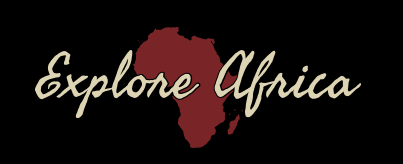




 Safari Camps
Safari Camps Points of Interest
Points of Interest Hotels & Resorts
Hotels & Resorts  Journeys
Journeys



